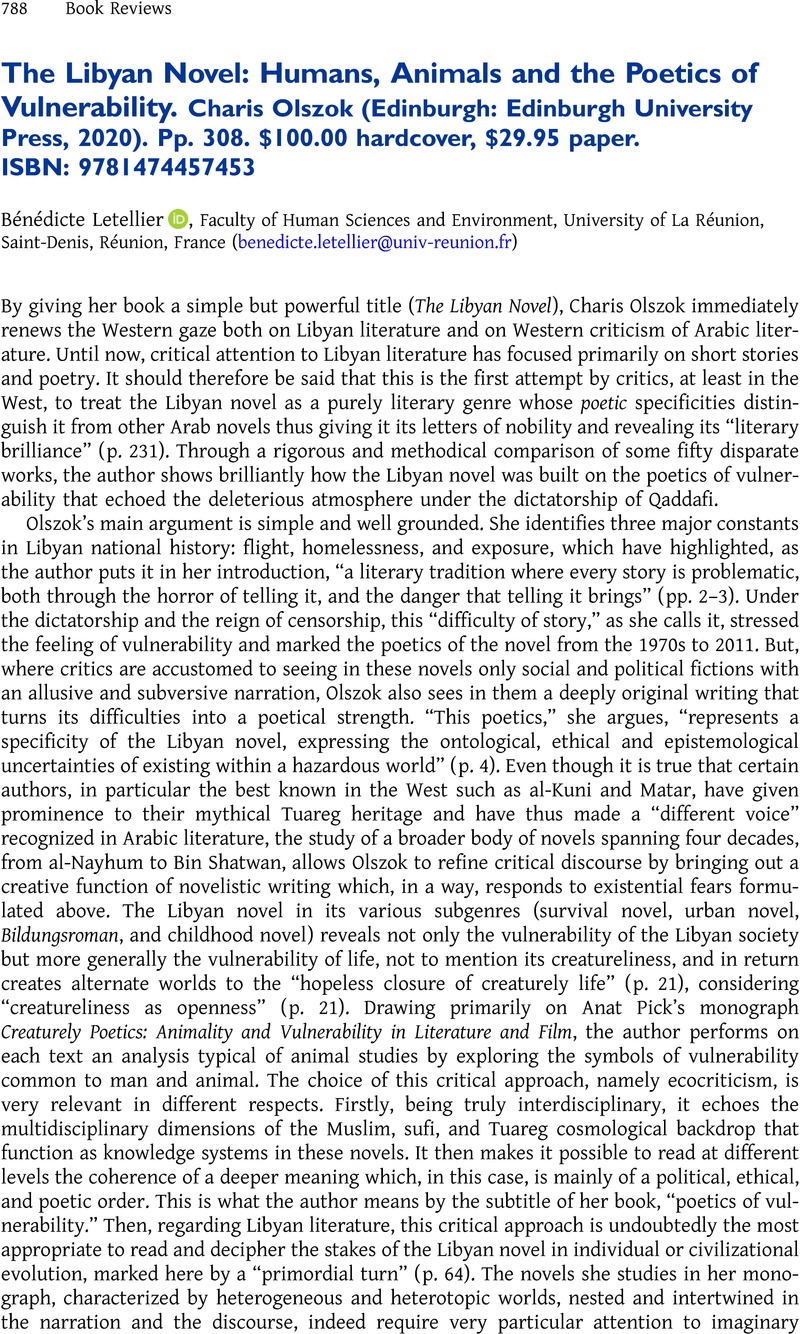No CrossRef data available.
Article contents
The Libyan Novel: Humans, Animals and the Poetics of Vulnerability. Charis Olszok (Edinburgh: Edinburgh University Press, 2020). Pp. 308. $100.00 hardcover, $29.95 paper. ISBN: 9781474457453
Review products
The Libyan Novel: Humans, Animals and the Poetics of Vulnerability. Charis Olszok (Edinburgh: Edinburgh University Press, 2020). Pp. 308. $100.00 hardcover, $29.95 paper. ISBN: 9781474457453
Published online by Cambridge University Press: 14 February 2023
Abstract
An abstract is not available for this content so a preview has been provided. Please use the Get access link above for information on how to access this content.

- Type
- Book Review
- Information
- Copyright
- Copyright © The Author(s), 2023. Published by Cambridge University Press



